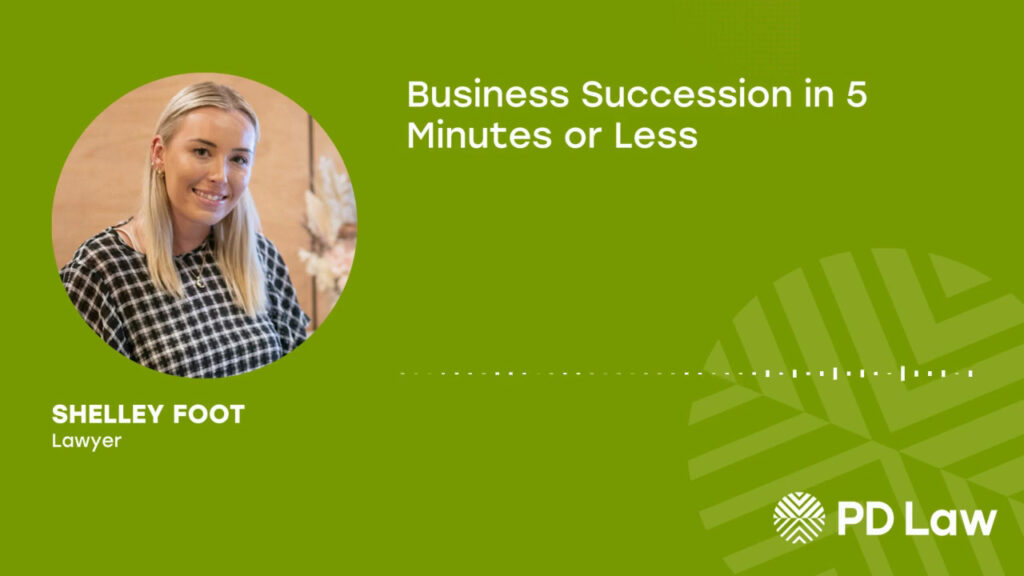In this podcast, PD Law Associate, Ali Ladd, talks about some important legislative updates with regard to residential tenancies and the key things landlords have to know right now.
Transcript
Intro: Thanks for joining us for this edition of the PD Law podcast, where I talk with PD Law Associate, Ali Ladd, about some important legislative updates with regard to residential tenancies and the key things that landlords have to know right now. So Ali, what is a tenancy agreement and what types of tenancy agreements can you get? For example, the pros and cons of, say, a fixed term versus a periodic?
Ali: Hi, Dan. This is an excellent question and one that landlords must know the answer to before they think about entering into a residential tenancy arrangement in Queensland. In that piece of legislation, there are two main avenues in terms of tenancy arrangements that can be entered into between the parties. One is a fixed term tenancy and one is a periodic tenancy.
A fixed term tenancy, as the name suggests, is a tenancy that is in place for a fixed period of time, and what that does, as you can naturally assume is give the party certainty as to how long they’re planning to be in the premises, rent, and other additional conditions that may be imposed on the tenant or the landlord in that tenancy. To that end, there are also certainty with how the tenancy is to end, also being that the end of the fixed term, so long of course, as the landlord provides the correct notice on the end of that tenancy arrangement.
However, periodic tenancies are ones that live on indefinitely and the only recourse for a landlord to end the tenancy under the relevant legislation is by a default of the tenant. This could be a breach of failure to pay rent, breaching number of occupants in the premises, or another series of substantive breaches that can’t be remedied by the tenant.
Falling short of a default, there are a couple of other instances where a landlord can terminate a periodic tenancy, but these are fairly narrow in scope, and so it’s crucial that when a landlord enters into a tenancy arrangement that they know what their exit strategy is, how they plan to get out of the tenancy, and what rights are available to them in the event that a tenant is in default.
Dan: So is it worth or, in fact, necessary to put a tenancy agreement in writing?
Ali: Ultimately, entering into a tenancy arrangement with a tenant without reflecting it in writing is kind of like going to the supermarket without a shopping list.
You walk in with an idea of what you want to buy, you walk around the supermarket, spend some time in there, you pick up a couple more things, you forget some items, and then you walk out with some completely different items that do not reflect what you needed in the first place, and that could be same with tendency arrangements aren’t properly reflected in writing.
Over time, parties might misunderstand or reinterpret the arrangement that they had in the first place and this can be problematic, especially when landlords are trying to exercise rights to vacate tenancies and relet premises.
Dan: And Ali, are landlords actually entitled to say no to pets?
Ali: Pets, and the discussion around pets and their entitlement to be in rented premises is huge and it’s something that often gets fought about between landlords and their tenants.
So ultimately, landlords aren’t entitled to say no to pets, unreasonably, and so if they were to refuse to have a pet in the premises, it needs to be on a particular basis which would be, there are too many pets in the premises, or the premises itself is not suitable for a pet to be kept, i.e. The premises may not have a fence, or it might be a small apartment, or there is a risk to health and safety, depending on what type of animal it would be.
Not to mention if it’s a breach of any kind bylaws or body corporate obligation that’s something else that landlords need to take into account. The process for seeking approval for pets to be entitled to stay in premises has changed recently under the act, and so now what has to happen is the tenant will submit a form to the landlord in which the landlord has 14 days to respond to that request, and in that response, they need to provide the grounds in which it refuses the pet request.
If it is refused and if you don’t respond within that 14 days, the landlord is actually deemed to have agreed for that pet to stay in that premises. So it’s quite important that if you get a formal request through from a tenant regarding pets that you respond and you respond promptly. Otherwise, failure to respond is somewhat of a deemed acceptance to allowing the pets stay in the premises.
Dan: Now, it might be a silly question, but does a rental property have to provide a minimum standard that is safety compliance and access to power and water, et cetera.
Ali: It’s now the case that from the first of September 2023, you must, as a landlord, provide a premises that meets minimum standards, and these minimum standards are that the premises is weatherproof and structurally sound, that fixtures and fittings are in good repair and not likely to cause any injury, that there’s locks on windows and doors where applicable.
It’s free from mold, damp, or any kind of pest, that there’s adequate plumbing and drainage and functioning kitchen and laundry facilities if that’s applicable for the premises. What this means is landlords are no longer able to advertise premises that don’t have these particular services, and you can’t contract out of these obligations.
So if you were to have an unapproved shack that doesn’t have access to water and services, and you tenant that out, you may, in fact, be in a breach of the legislation. Now, there are some exceptions to this rule, but overall, landlords obligations to their tenants are increasing, and so it’s crucial that landlords do spend the time to get acquainted with the residential tenancies and Rooming Accommodation Act and with their obligations under it. There is a lot of information on the Residential Tenancies Act website for landlords.
And it’s so important that landlords keep up to date with their obligations as it may affect their rights in the event of a dispute with a tenant or injury or other instance where tenant may feel as though they’re entitled to claim some recourse against the landlord.
Dan: And Ali, what are the steps to take in the event that a tenant actually breaches any terms of a tenancy agreement?
Ali: There are minor and significant breaches of a tenancy agreement which give rise to different rights for landlords under the act. Minor breaches will result in notices to remedy and then there are significant breaches that also result in notices to remedy.
Depending on the breach will change the process and the timing in which tenants have to respond, and what recourse the landlord can then take for a failure to remedy those breaches, i.e. Seeking an order from the QCAT, or a determination of the tenancy agreement.
Dan: That was Ali Ladd from PD Law and of course, it goes you without saying that if you’re a landlord and need any legal advice with your current or future residential tenancies, you can reach out to Ali and the team at PD Law.
Disclaimer: This podcast has been transcribed using AI. There may be errors that were lost in the translation.



